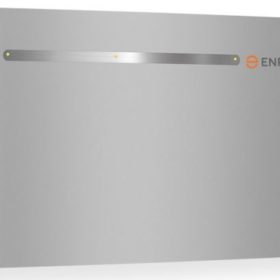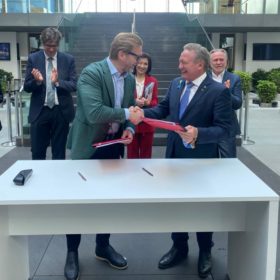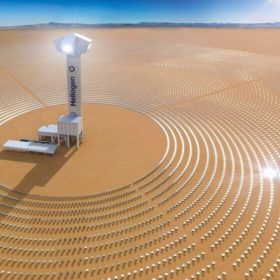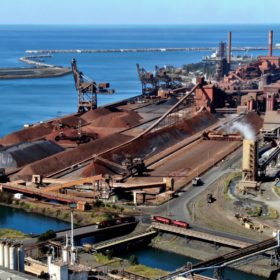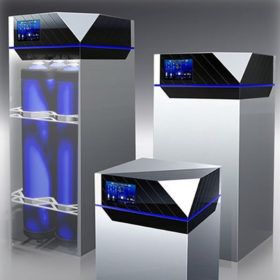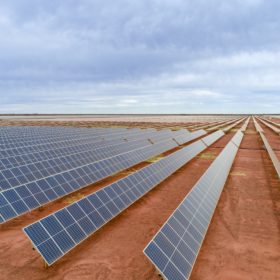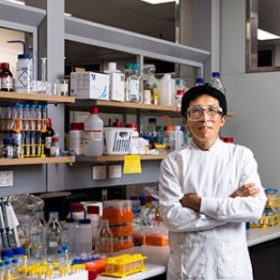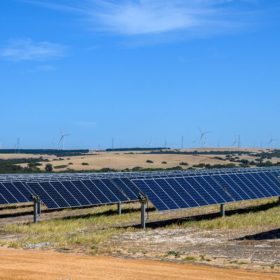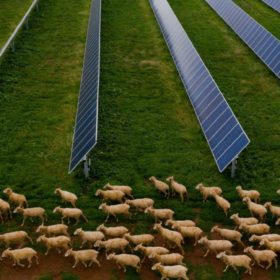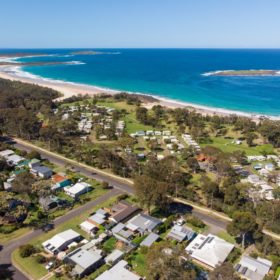Enphase launches pilot to pay US solar customers for leasing batteries, sharing energy
Homeowners who participate in a new Enphase pilot project will connect their home batteries to the US grid, sharing energy through Green Mountain Power’s distribution system in exchange for financial incentives.
Fortescue to become Europe’s largest renewable hydrogen supplier with $50 billion deal
The deal between Fortescue Future Industries and E.ON, one of Europe’s largest energy network operators, will see the Australian company deliver five million tonnes of green hydrogen to Germany, the Netherlands and other European cities by 2030. “For us, it’s a minimum $50 billion expenditure. And that is one I welcome,” Fortescue founder Andrew Forrest said at press conference in Berlin overnight.
Woodside backs concentrated solar startup ahead of Australian tech push
Australian fossil fuels giant Woodside will invest in US-based concentrated solar startup Heliogen, supporting its construction of a full-scale concentrated solar thermal demonstration plant in California ahead of a push into Australia.
NSW hydrogen hubs draw eight times more interest than expected
Traditionally one of the slower states to move away from fossil fuels, New South Wales is rapidly turning the tables – and the market is responding enthusiastically. The state government yesterday revealed it had received more than $4 billion worth of investment interest for its Hunter and Illawarra hydrogen hubs.
Toyota develops new module to store, transport hydrogen
Japanese automaker Toyota has used its hydrogen tank tech in a new module to expand hydrogen storage to railways, shipping facilities, cargo ports, and fuel cell generators. Its 70MPa tank has a storage capacity of 2.7 kg to 18.7 kg and a tank mass ranging from 43.0 kg to 243.8 kg, depending on the size.
Territory government ramps up support for 20GW solar and battery project
The world’s largest solar PV and battery energy storage project has locked in renewed political support with the Northern Territory government confirming it will introduce special legislation into parliament this week that will facilitate the development of the giga-scale Australia-Asia PowerLink project.
UQ researchers promise lifespan boost for lithium-ion batteries
Researchers from The University of Queensland have developed a new nanotechnology that they say more than doubles the lifespan of high-voltage lithium-ion batteries, paving the way for higher density and lower-cost energy storage solutions.
NSW outlines plans for 2.5GW renewable energy zone in state’s southwest
The New South Wales Government has outlined plans for another coordinated renewable energy zone which will deliver at least 2.5GW of new network capacity as the state’s transitions from fossil fuels towards renewable power accelerates.
Octopus teams with green bank on 300MW solar-storage project
The Australian arm of U.K.-based global fund manager Octopus Group and the Clean Energy Finance Corporation have added another renewable energy project to their joint venture’s portfolio, announcing they will work with the founders of the Blind Creek Solar Farm near Bungendore in regional New South Wales to deliver the 300MW agri-solar and battery project.
Endeavour launches $4.1 million solar microgrid for NSW South Coast
Electricity distributor Endeavour Energy has announced plans to deploy a solar-powered community microgrid featuring 3MW/3.5MWh of battery energy storage in a bid to improve the resilience and reliability of electricity supply for regional communities on the New South Wales South Coast.
